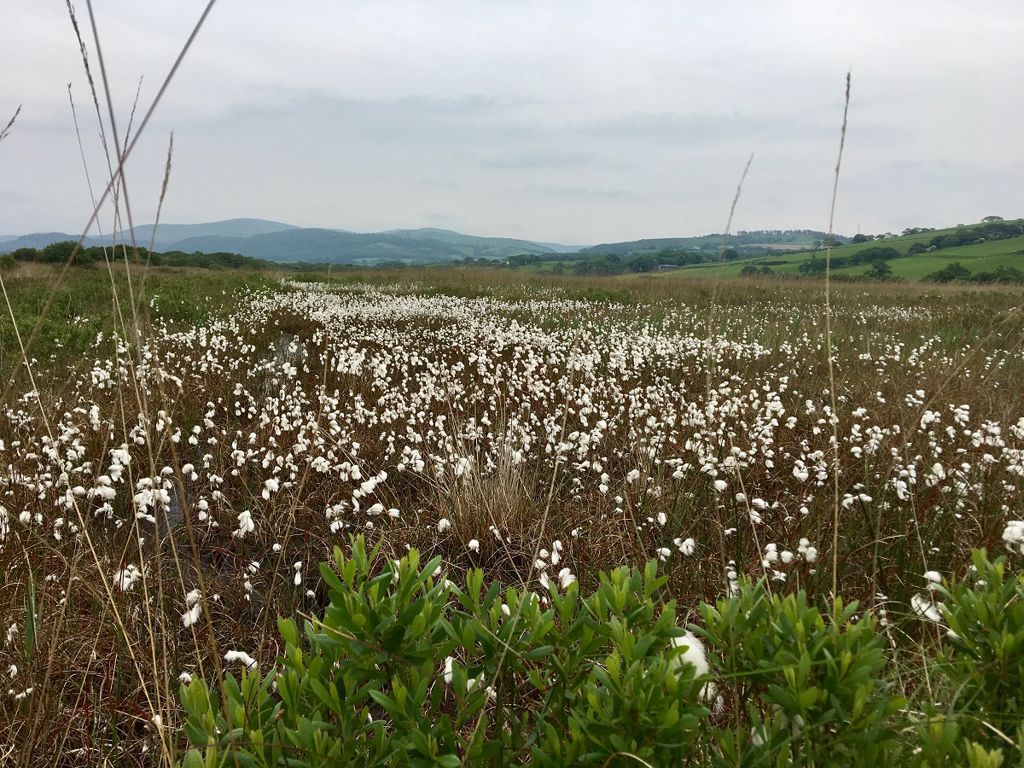The Arch, near Aberystwyth
Walks through huge beech trees with views over...

Cors Fochno is part of the Dyfi National Nature Reserve, situated midway between Aberystwyth and Machynlleth.
Cors Fochno is one of the largest and finest remaining examples of a raised peat bog in Britain - peat has been accumulating here gradually and continuously for over 6,000 years and now reaches a depth of over 6 metres.
The short walk from the small parking area includes a circular boardwalk around the edge of the bog.
The walking trail is waymarked from start to finish.
Look out for the information panel at the start of the trail.
Find out about walking trail grades.
Enjoy views over the huge peat bog on the circular boardwalk.
Cors Fochno is part of the Dyfi National Nature Reserve.
This 2,000 hectare reserve also includes the Dyfi estuary and Ynyslas sand dunes.
Ynyslas Visitor Centre is the main access point to the Dyfi National Nature Reserve.
National Nature Reserves are places with some of the very finest examples of wildlife habitats and geological features.
The landscape and wildlife varies depending on which time of year you visit – here’s what to look out for.
The bog’s formation started around 5500 BC when part of the estuary floodplain was covered by forest, but as sea levels rose, the forest was replaced by reed swamp and then peat bog.
The most westerly part is now eroded by the sea, but at low tide the stumps of long dead trees can still be seen on the beach near Borth.
The bog’s surface today is dominated by a tapestry of green, gold and red sphagnum mosses and many rare and unusual species live here including insectivorous plants like sundews, the rosy marsh moth and small red damselfly.
Cors Fochno was one of seven places in the Welsh Raised Bogs Project. To learn more about the restoration work, go to New LIFE for Welsh Raised Bogs.
Many rare and specialised invertebrates survive here.
They include:
The waterlogged bog surface is a hostile place for most plants, and those that thrive here, like bog cotton, bog asphodel and bog myrtle, all have special adaptations.
Carnivorous plants also come into their own here including all three native species of sundews.
The most important bog specialist plants (and the main peat-formers), are the bog mosses or sphagnums, which form colourful carpets on the open bog and raise its surface into a shallow dome as their remains accumulate.
Fifteen species of bog moss occur here including three national rarities.
There are over 70 National Nature Reserves in Wales.
Find out more about National Nature Reserves.
Education groups are welcome to use the Dyfi National Nature reserve at Ynyslas and Cors Fochno for field studies.
The retail and catering services at Ynyslas visitor centre are no longer operating and bookings for groups are no longer taken.
The information below is available for education groups:
Dogs are not allowed on Cors Fochno.
The Wales Coast Path runs along the southern and eastern edge of Cors Fochno between Borth and Tre Taliesin.
The Wales Coast Path provides a continuous walking route around the coastline of Wales.
For more information go to the Wales Coast Path website.
Cors Fochno is within the UNESCO Dyfi Biosphere.
Biospheres inspire communities to work together in creating a future we can all be proud of, connecting people with nature and cultural heritage, while strengthening the local economy.
For more information go to the Dyfi Biosphere website.
We want you to return home safely after your visit here.
You are responsible for your own safety as well as the safety of any children and animals with you during your visit.
Please note:
For advice and tips to help you plan your visit here go to Visiting our places safely.
See the top of this webpage for details of any planned closures or other changes to visitor facilities here.
For your safety, always follow instructions from staff and signs including those for trail diversions or closures.
We may divert or close trails whilst we undertake maintenance work or other operations and we may need to close other visitor facilities temporarily.
In extreme weather, we may close facilities at short notice due to the risk of injury to visitors and staff.
You may need permission from us to organise an event or to carry out some activities on our land.
Check if you are allowed to use our land.
We recommend you follow these directions or use the Google map below which has a pin on this place’s location.
Cors Fochno is 11 miles north of Aberystwyth.
From Aberystwyth, take the A487 towards Machynlleth.
After around 9 miles, in Tre’r-ddôl, turn left towards Ynyslas on the B4353.
Continue for around 1½ miles and turn left onto a small track with a gated entrance.
Drive down this track, closing the gate after driving through, to the small parking area (about 600 metres along the track).
The Ordnance Survey (OS) grid reference for the car park is SN 633 922 (Explorer Map OL 23).
The postcode is SY24 5LB. Please note that this postcode covers a wide area and will not take you directly to the entrance.
View this place on the What3Words website.
The nearest mainline railway station is in Borth.
For details of public transport go to the Traveline Cymru website.
Parking is free of charge.
The small parking area is reached by driving down a narrow track with a gate at the entrance.
Overnight parking is not permitted.
There are no staff at this location.
Contact our customer team for general enquiries during office hours, Monday to Friday.